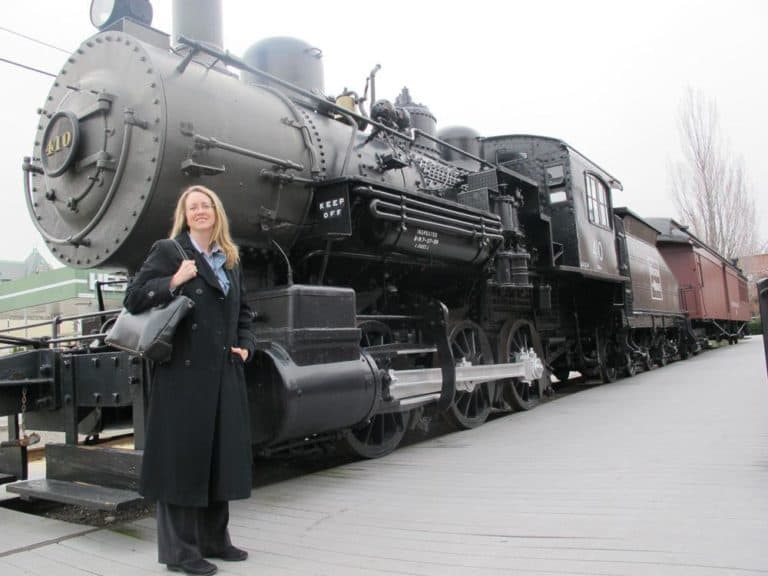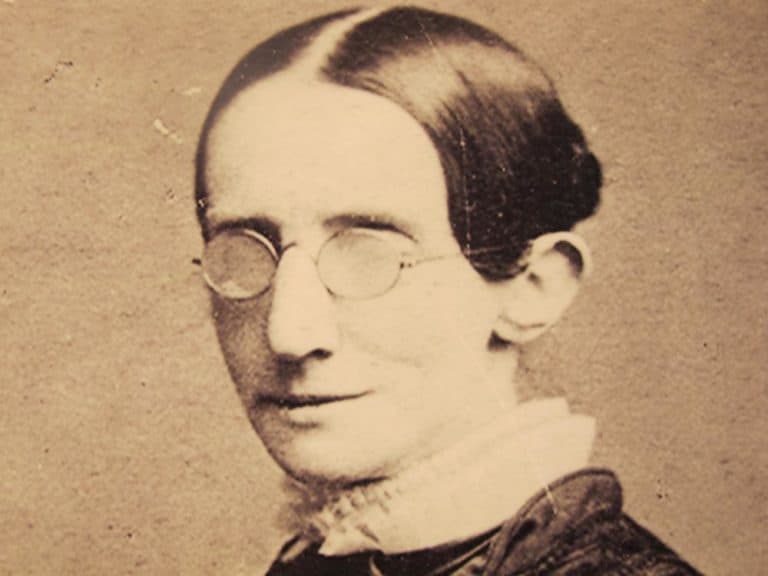Advertisement
Dickens Wielded Pop Star Power On Mass. Tour In 1842
Charles Dickens - the Victorian writer who conjured such classic characters as Pip, Oliver Twist, Nicholas Nickleby and Scrooge - is 200 years old this year. His birthday is being celebrated all over the world, including in Massachusetts. Dickens visited the state in 1842, but he was also a celebrity with a social agenda.
You might cringe at the idea of comparing Charles Dickens to Lady Gaga, but he also used the power that comes with celebrity to affect change. In the mid-1800s everyone read Dickens. He published six novels by the time he was 29 years old. What isn’t so well known is that he was also lifelong advocate for the disabled, the poor and the rejected.
"I think of Dickens as somebody who makes the invisible visible," said Diana Archibald, a scholar at UMass Lowell. Archibald described how Dickens himself suffered hard times as a child. His father squandered the middle-class family’s finances, forcing Dickens — at age 11 — to work in a blacking warehouse pasting labels on shoe polish containers.
"As a boy who had dreams of becoming a gentleman — a literate gentleman — and who loved school and loved reading, it was devastating to have that happen," Archibald explained.
But that set Dickens on a compassionate course. His experiences fueled the iconic, endearing characters and stories he created — "Oliver Twist," "David Copperfield," "Great Expectations" — but also his non-fiction. When the British writer came to the United States in 1842, he was on a mission.
"His interest in coming to America was driven by his keen curiosity to see the American experiment," Archibald said, "and while he was here as a tourist he knew that he would be writing a travel narrative."
His first stop was Massachusetts, and Dickens would call the detailed, personal chronicle of his U.S. tour “American Notes.”
"He was a bit disappointed," according to Archibald, "but not with Massachusetts. He found Massachusetts to live up to what he expected. And I think his interest in coming to places like Lowell, or the Perkins School, was founded in his interest in finding solutions to the social problems that cause such great human misery."
Advertisement

Archibald is co-curating an exhibition with David Blackburn of the Lowell National Historic Park called “Dickens and Massachusetts: A Tale of Power and Transformation.” The author took the train from Boston to Lowell because it was touted, world-wide, as an epicenter and model of modern industry. Dickens called England’s industrial complexes in Manchester and Birmingham, “desperate haunts of misery,” and he was eager to explore New England's textile mills and the workers inside.
"Of course Dickens came to see the mills, but what he really loved was the girls!" Archibald exclaimed with a laugh. "Not in a bad way! He just liked the girls. He was impressed with them, and I think they were pretty impressive, especially compared to the industrial manufacturing population in England."
As we walked through an old mill-turned-museum, the UMass professor described the "mill girls" as Dickens did in “American Notes." They were clean, healthy and well-dressed.
I happened to arrive at the first factory just as the dinner hour was over and the girls were returning to their work. Indeed the stairs of the mill were thronged with them as I ascended. They were all well-dressed, and not to my thinking above their condition, for I like to see the humbler classes of society careful of their dress and appearance, and even if they please decorated with such little trinkets within the compass of their means.
In Dickens' day Massachusetts was the scene of larger social reform movement, too, and he was curious about our institutions, including the Perkins School for the Blind in Boston.
Jan Seymour-Ford, research librarian at the Perkin's School for the Blind, said "before he came he said he wanted to see two things: Niagara Falls and Laura Bridgman."

Laura Bridgman, a student at Perkins, was world famous for being the first deaf-blind person to be successfully educated. A bust of Bridgman resides at the school.
"She was eloquent, she had a personality, she a sense of humor. It shattered everyone’s preconceptions."
Dickens toured Perkins with his wife, Rep. Charles Sumner and Boston Mayor Jonathan Chapman. The entourage observed kids in the gymnasium and heard a recital. Seymour-Ford said Dickens was star-struck when he finally met Bridgman.
"She didn’t particularly like men," Seymour-Ford said. "She took his hand, perceived instantly that it was a man, and pulled away from him. But she was very enchanted with Mrs. Dickens’ dress and she examined that very closely. She loved finery and lace and pretty clothes, and actually she grew up to be an incredible lace knitter."
Bridgman's lace is in the Lowell exhibition, along with Perkins’ edition of "The Old Curiosity Shop." Its words are in a pre-Braille raised print known as Boston Line Type. Dickens donated it to the school, and he wrote about Laura Bridgman in “American Notes.”
"He was the most popular writer in the world, he had a bully pulpit when he came here, so he changed society for people with disabilities," Seymour-Ford said.
Professor Archibald added, "Later Helen Keller’s mother picked up 'American Notes,' read it, and realized that there was help for her daughter Helen. And that is how Anne Sullivan ended up becoming Helen Keller's teacher."
These are the kinds of stories Archibald wants people to discover through the exhibition in Lowell. There’s a trove of Dickensian information and artifacts — portraits, trinkets, illustrations, letters, diary entries, and a first edition of “American Notes” on loan from the Worcester Polytechnic Institute’s Fellman collection.
"Leaving Boston on the afternoon of Saturday, February the 5th we proceeded by railroad to Worcester, a pretty New England Town..."
From Dicken's 'American Notes'
Dickens spent four days in Worcester, including his 30th birthday on Feb. 7. He stayed at Gov. John Davis' mansion, and of course the governor hosted a party for the writer. But Dickens also made time to see Lorenzo Fowler, a preeminent phrenologist — a.k.a. a head bump reader.
"I think anyone who felt the bumps on Dickens' head would be quite confident in saying, 'Hmm, a great deal of creativity here, perhaps some literary skills, wonderful sense of humor.' Right?" Brattin said, with skeptical amusement.
Brattin said it’s clear from Dickens’ written account that he valued what he learned on his tour of Massachusetts. And he made a lot of friends. But the same can’t be said for the rest of Dickens' travels in America.
"He grew to be disillusioned with America later in his trip," Brattin said, elaborating, "Part of that was his disgust at American slave-holding, part of that was disgust at the manifest greed and selfishness that he saw in American society."
In fact Dickens was so disgusted he cut his trip short as he traveled south, and headed back north so he could see Niagara Falls. Of course he wrote about that, too. Dickens published “American Notes” soon after returning to England — which was good for Massachusetts — but not so good for the rest of the America.
This program aired on March 23, 2012.
